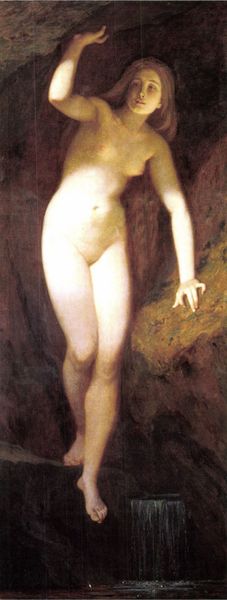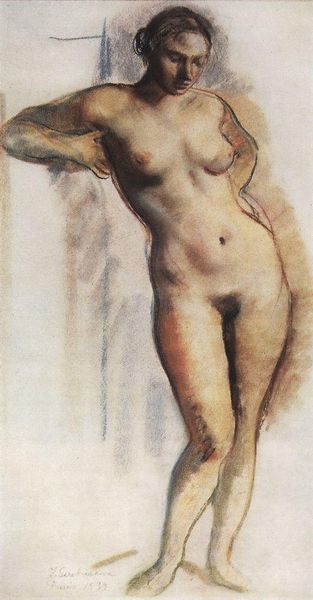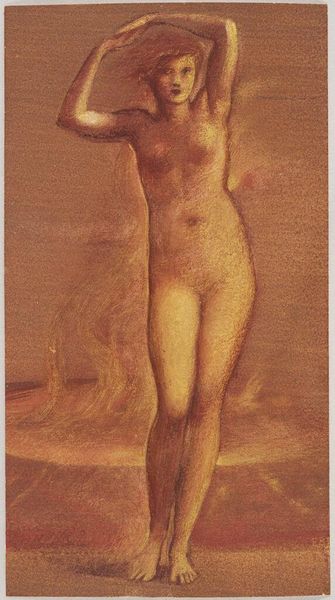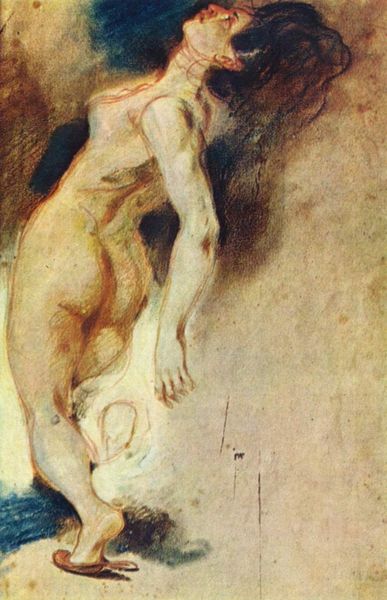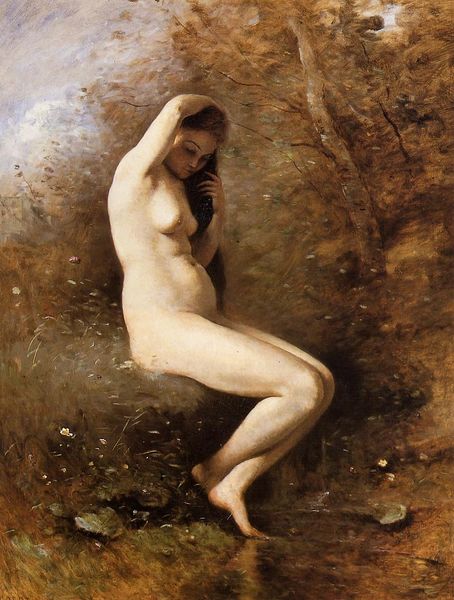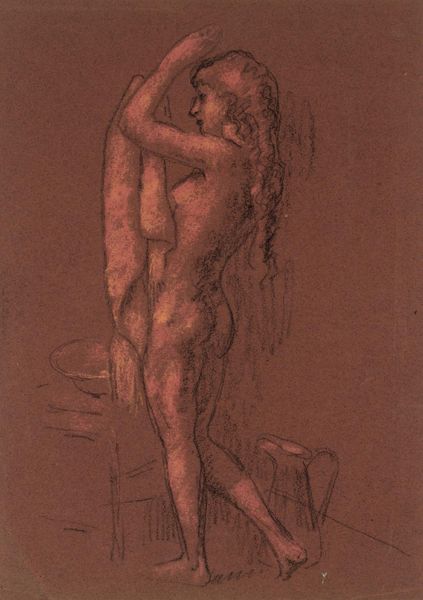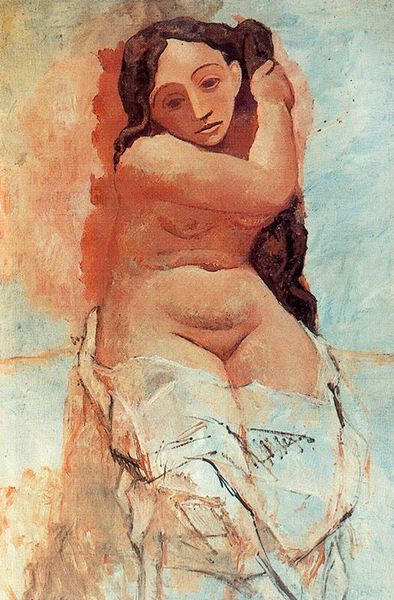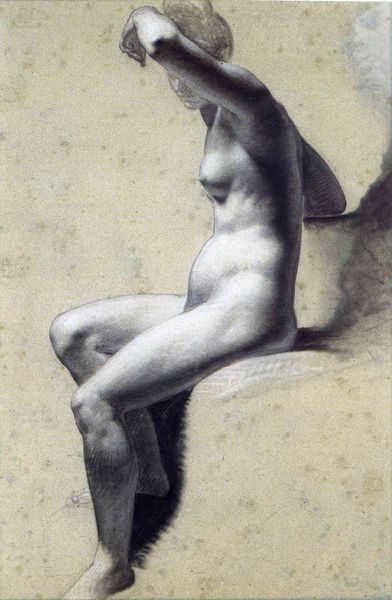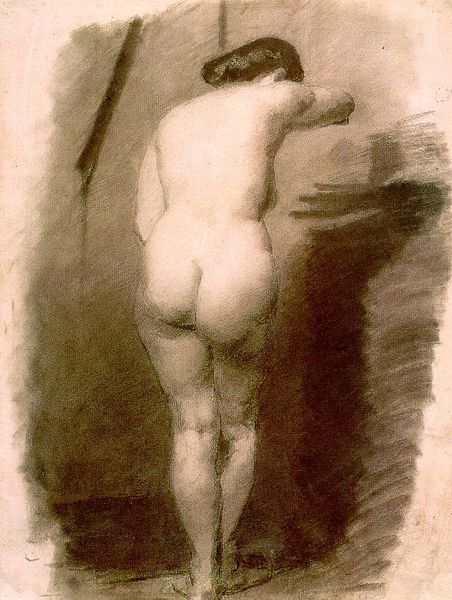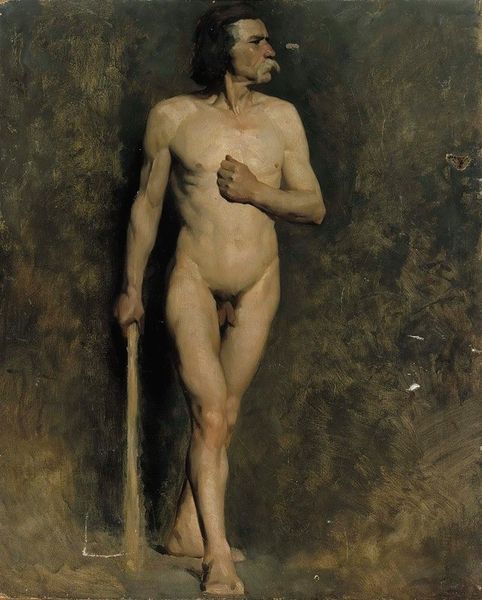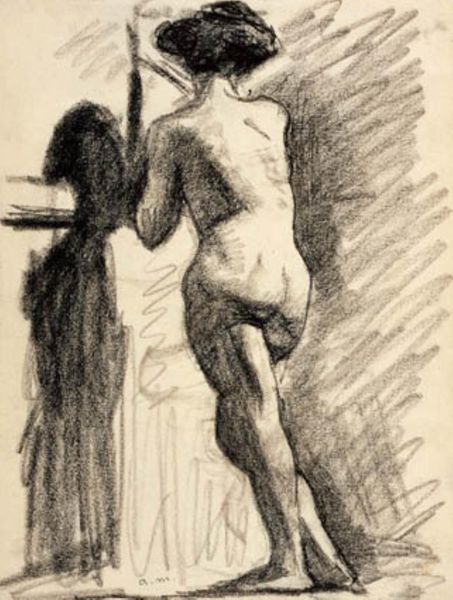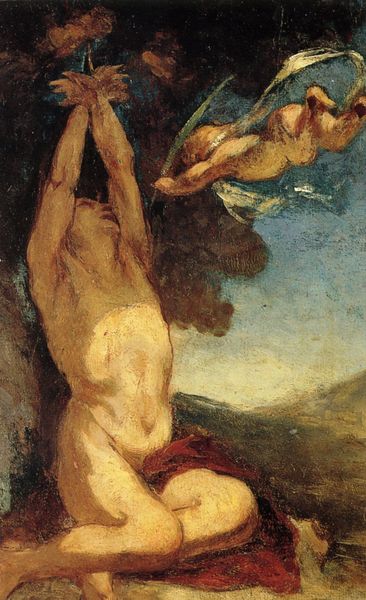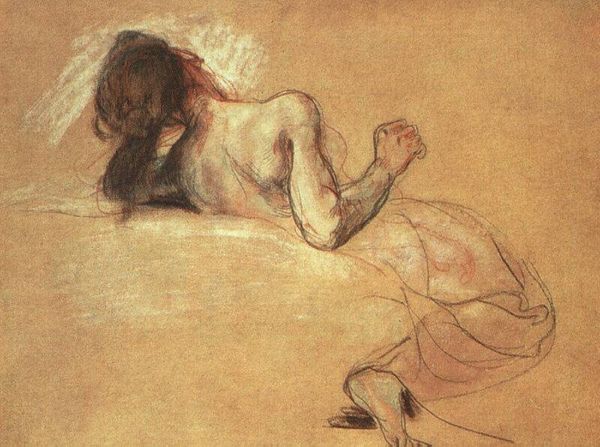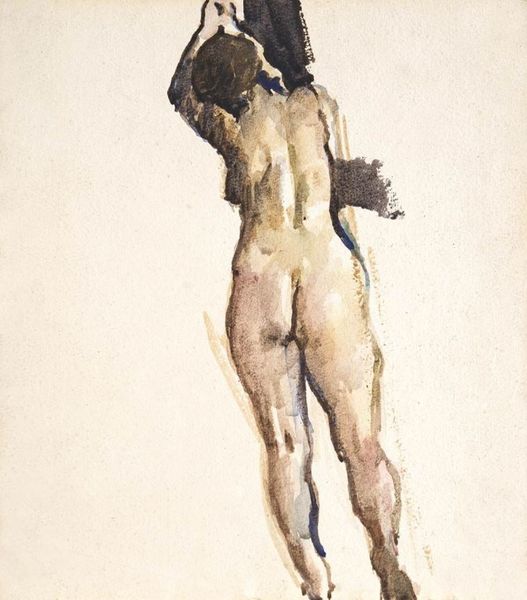
drawing, watercolor
#
drawing
#
impressionism
#
charcoal drawing
#
figuration
#
oil painting
#
watercolor
#
female-nude
#
nude
Copyright: Public domain
Curator: Thomas Eakins’ watercolor “Female Nude,” created in 1884, presents a contemplative depiction of the human form. Editor: It's stunning. The watercolor medium gives the figure a soft, almost ethereal quality. The tonal variations create a beautiful sense of depth, guiding my eye through the gentle curves. Curator: Eakins was known for his meticulous approach to depicting the human body, influenced by his studies in anatomy and his commitment to Realism. Consider the process: the layering of translucent washes to build up form. Watercolor presented unique challenges compared to his oils, demanding precision and control. Editor: And yet there’s a vulnerability in the mark-making, an openness. I can almost sense Eakins responding in real time to the way the pigments interacted with the paper. It's not merely representational; there's an expressiveness embedded in the application itself. The restricted palette speaks of earth and flesh and shadows. It feels very human. Curator: Eakins’ use of live models was itself controversial for the period. There's the artistic act, but also the labor of the model to consider. Editor: True, but within this composition, she exists outside those controversies, defined by the beautiful abstraction of shadow and light on form, and a visual unity made so clear by the elegant contours of the back and shoulders. The contrast and delicate modeling capture a specific atmosphere of reverie and stillness. Curator: Examining Eakins’ use of watercolor deepens our understanding not only of his process, but also of the prevailing academic and social values influencing artistic practice at the time. It allows us to see art not as disembodied, but as produced by individuals shaped by the conventions of 19th century America. Editor: Yes, seeing it this way contextualizes those visual choices. Still, it returns me to the composition’s profound grace. There’s a sense of fleeting beauty he captured. It almost reads as an idealized visual language. Curator: Precisely. The work encourages us to investigate further the complicated interplay between an artistic intention and an observer’s perception. Editor: Well, in viewing art through these distinct lenses, perhaps we can come closer to something that feels…definitive.
Comments
No comments
Be the first to comment and join the conversation on the ultimate creative platform.
